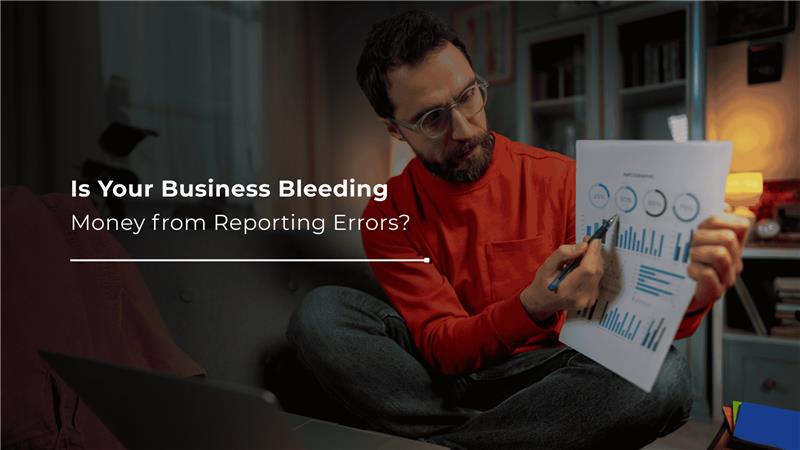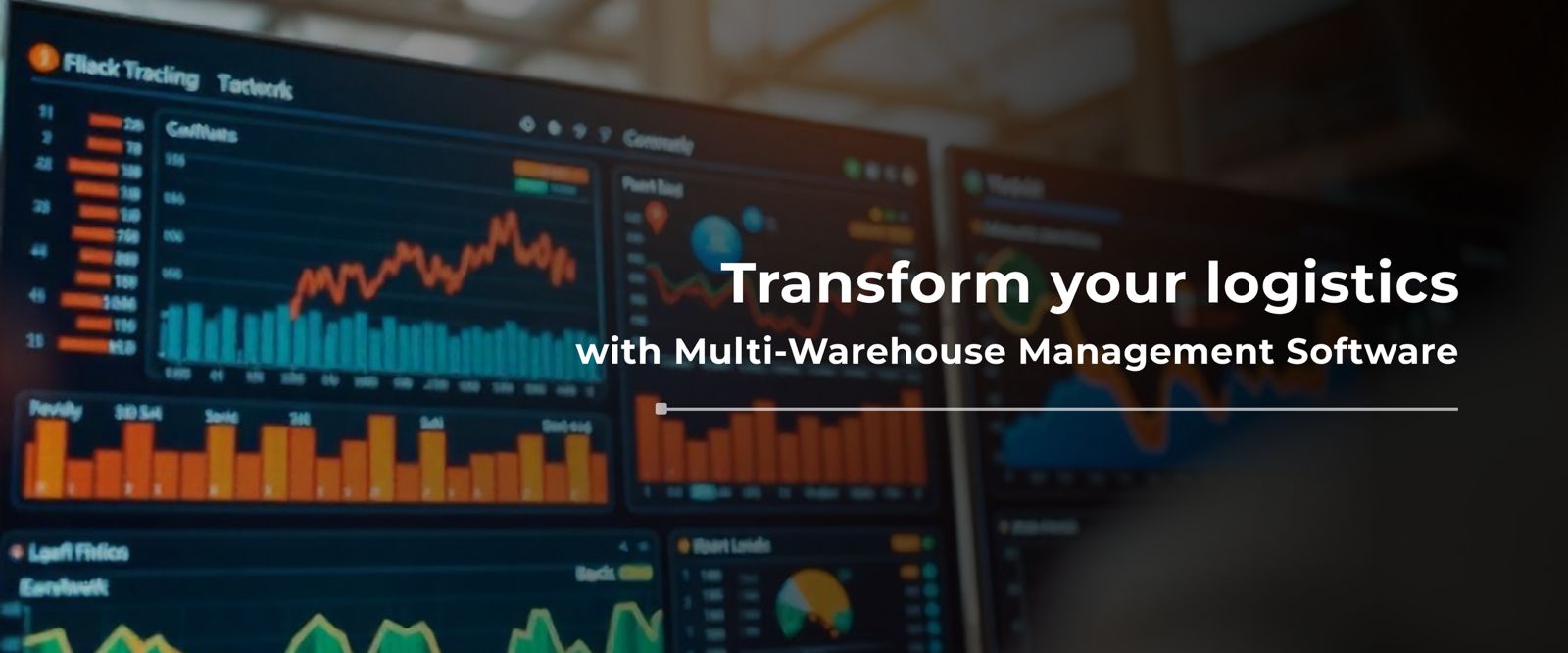Hey! Lets Talk about your project
We’ll contact you within a couple of hours to schedule a meeting to discuss your goals.
Why Inaccurate Financial Reports Can Lead to Costly Mistakes
Posted on : 17 June, 2025
Why Inaccurate Financial Reports Can Lead to Costly Mistakes
Inaccurate financial reporting errors can cause financial losses, legal troubles, missed opportunities, and outright bad decisions. For example, a CEO might over invest in a project because cash was overstated, or underpay taxes because profits were understated. CFOs and founders know the sinking feeling when a single typo in a spreadsheet is discovered: it means corrections, fines or even boardroom headaches ahead. In this post, we’ll explain the problem, outline real consequences, and explore solutions that help prevent these errors.
What is financial reporting?
Financial reporting is the process of producing and communicating your company’s financial statements – the balance sheet, income statement (profit & loss), cash-flow statement, and related notes.
These reports summarize your revenue, expenses, assets, liabilities and cash flow for internal managers and external stakeholders.
For instance, investors, lenders or board members use these reports to judge your company’s health, while your CEO and department heads rely on them to plan budgets and strategy. In short, financial reporting is the language of business performance.
Why is it important?
Accurate reports are crucial. Investors and creditors need a true picture of your finances to decide whether to buy shares or extend credit. Banks, credit agencies and regulators require precise financials for compliance.
Inside the company, executives use the data to set prices, hire staff, and decide when to expand. As one expert puts it, “even the most accurate information can be worthless if it’s out of date,” so reports must be timely and correct.
In short, every business decision from launching a new product to planning payroll rests on these numbers. If the foundation is shaky, the whole strategy can collapse.
How do errors happen?
Most reporting errors are unintentional. Common causes include manual processes and human oversight. For example, forget to reconcile a bank account or enter an expense twice, and your books won’t balance. CFOs often see small businesses skip routine reconciliations, which lets transactions slip through the cracks. Others use different methods in different departments (e.g. cash vs. accrual accounting) so numbers don’t line up across the company.
In one survey, experts listed these triggers: inadequate training, spreadsheet typos (transposed digits or missing decimals), mis-mapping data between systems, and even using the wrong account code for a transaction.
For example, recording a $5,000 invoice as $500 (an error of original entry) leaves your books “in balance” but actually misstates cash flow. Even automated tools aren’t foolproof if staff input bad data.

Every time a number is entered or a formula used, there's a risk of a mistake. Unfortunately, many teams still rely on Excel or disconnected software for critical data. One expert notes that disjointed or outdated systems “create data havoc, resulting in errors through improper mapping”. When reports go out with errors, the slippery slope has begun: one small blunder, repeated across months or units, can grow into a crisis.
The Consequences of Financial Reporting Errors
Ignoring sloppy numbers invites many risks including,
Wasted time and money
Finding and fixing errors is frustrating and costly. Staff may spend weeks chasing down a single discrepancy, delaying other projects. Audits get longer, and everyone’s patience wears thin.
Bad decisions
Management decisions based on bad data can backfire. For example, underpricing a product or hiring too many employees can happen if revenue was overstated. Inaccurate reports have led companies to overdraw bank accounts or miss budget targets.
Cash-flow problems
Small errors in cash or receivables can snowball. If cash flow is overstated, a company can suddenly find itself short on payroll when bills hit. Understated cash, on the other hand, means missed chances to invest or seize market opportunities.
Fines and audits
Regulators don’t look kindly on bad financials. Underpaid taxes result in hefty penalties, interest and audits. We know that paying too little in taxes due to errors can result in late fees, penalties, and interest.
Lost credibility
Stakeholders lose trust. Lenders may tighten credit terms or refuse loans if your books seem unreliable. Investors and board members grow wary when statements are revised – it’s a red flag that reporting isn’t under control.
Damaged valuations
Even if no fraud is involved, restatements scare markets and make fundraising much harder. A food manufacturer’s stock dropped 20% in a day after admitting past earnings were inaccurate.
Poor budgeting
Any budget or forecast built on bad data is doomed. You can’t set a realistic budget or cash forecast if the prior year’s figures were wrong. This means future planning will also be off-base.
In short, financial reporting errors cost your trust, disrupt strategy, and even put businesses in the red.
Solutions That Help
The good news is that most errors can be prevented with the right tools and controls. Two key solutions stand out: modern ERP systems and automated accounting software.
ERP for accurate financials
An ERP (Enterprise Resource Planning) system unifies all financial processes under one roof. Instead of juggling separate ledgers for sales, payroll, inventory, etc., an ERP uses one integrated database.
When you enter a sale, the system automatically updates revenue, taxes, and inventory levels across the board. The features like accounts payable, accounts receivable, general ledger and reporting modules all talk to each other.
ERP platforms also build in controls: they enforce consistent account codes, require approvals for large transactions, and maintain full audit trails. One case study found a manufacturer cut accounting errors by 20% after going live on an ERP.
For industries with complex workflows, a manufacturing ERP can further streamline operations by integrating production planning, inventory management, and financial reporting into one unified system.
Companies often see shorter month-ends, faster consolidations, and real-time dashboards. According to experts, automated ERP solutions can reduce accounting mistakes by up to 30%.
Benefits of automated accounting software
Even without a full ERP, smaller businesses can fight errors by using automated accounting software. These cloud tools connect directly to your bank accounts, credit cards and invoicing, and they handle rote tasks for you.
For example, once set up, the software can import bank transactions daily, match them to invoices or bills, and apply the correct accounting codes automatically. This means no more retyping numbers or fumbling with spreadsheets each month.
Automation brings data accuracy. As one accounting expert notes, automated systems “ensure accurate calculations by reducing human error in financial data entry”, resulting in reliable financial reports. In practice, this means every expense and sale is logged consistently.
Instead of spending days assembling a profit and loss statement, your team can generate it with one click and the numbers will already reconcile.
Since everything is digital, automated systems often include alerts for anomalies (like a duplicate invoice) or remind you about upcoming bills, preventing oversights. By removing guesswork, they also reduce operational costs: fewer bookkeeping hours are needed, and costly mistakes drop significantly.
In short, with automated accounting software, your books stay clean without manual juggling. You and your accounting team can focus on what matters, analyzing the results and making strategic decisions, rather than wrestling with arithmetic.
Next Steps
Every finance leader knows that preventing errors is smarter than fixing them later. Investing in reliable systems and processes pays off. For example, upgrading to a modern ERP or accounting suite can automate checks and balances in ways old spreadsheets never could.
Many businesses turn to solutions like IPIX Technologies’ cloud ERP and accounting tools to tighten up their books. IPIX’s platforms integrate financial modules and automate reporting workflows, helping spot discrepancies before they escalate.
Recognized as one of the best ERP software in India, IPIX Technologies offers solutions that make the financial close process smoother and more accurate. If you’re dealing with reporting headaches, consider evaluating their platforms to automate and simplify your financials.



































 Talk to our Expert
Talk to our Expert
